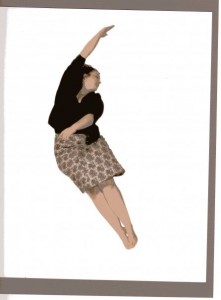Ballet has always been my first dance love. Ever since I first saw a class while waiting for my tap class to begin, I was hooked. I loved the shapes, the grace, and the expressive elegance of its structure.
In early ballet of the twentieth century, the form was drastically different than the precision and technicality of what “classical” ballet is today. Never have I seen such stark differences between these two approaches as with the performance of Fokine’s “The Dying Swan”.
Anna Pavlova, the mistress of the bourree, one of the premier dancers of her time, was legendary for her expressive and emotive performances. Her epic role in “The Dying Swan” was said to have captured the very essence of the struggle for life.
In it’s modern interpretation, it is often used as a malleable piece designed to showcase each dancer at their best. The bourree’s in Fokine’s version were specifically for Pavlova – and to answer some critics who claimed he was only doing dances flat-footed. However, I can’t help but wonder if the difference between these versions has to do with these two divergent schools of thought with regards to the quality of movement and how this shapes performance.
Watch first Pavlova’s interpretation….
Fokine describes the work’s ambition:
“Small work as it is, […] it was ‘revolutionary’ then, and illustrated admirably the transition between the old and the new, for here I make use of the technique of the old dance and the traditional costume, and a highly developed technique is necessary, but the purpose of the dance is not to display that technique but to create the symbol of the everlasting struggle in this life and all that is mortal. It is a dance of the whole body and not of the limbs only; it appeals not merely to the eye but to the emotions and the imagination.”
Now a modern version danced by Uliana Lopatkina:
Perhaps the two versions are attempting to say two different things, but the beauty in the Fokine version was its reality, its stunning embodiment of the emotions and confusion of the dying animal which resonates deeply with us as it applies to our own sense of mortality.
However, the modern interpretations feel cold and distant – almost clinical by comparison. With the emphasis on technique, and execution of form, over genuine emotion, I see less of the dying swan and more of a depressed swan acquiescing to misery.
If you study Pavlova’s version, you can see that while she is completely controlled in her lower body and stable in her torso, she is able to relax the upper body, head and arms to convey the wounded animal. She “struggles” in the work to directly portray the throws of a dying animal. Her head lolls and her arms are heavy; there is desperation in her attempts to fly, to flee the pain.
Contrasted with the modern variation, the lines are smoother, there is total control, the movement is more technically precise and difficult in some areas. But there is no desperation, no fight. There is passivity and an even handedness to the presentation. It is not bad, but it doesn’t really convey much of anything. It feels more apathetic than emotive.
I find this to be a stumbling block within classical ballet as an art form – the idea that precision, technicality, virtuosity is elevated above the quality of performance within that classical form and structure. Honestly ask yourself, would you rather see the technically precise 32 fouettes or a single turn that made you feel something?
I feel like it’s a tad bit ironic that a “classical” form has in a sense, lost hold of its “classical” roots. But I long for the day when classical ballet takes hold and firmly embraces the amazing expressive nature of the early 20th century, the small dances and ballets with experimental technique and dancers who were perhaps imperfect in some ways, but who could evoke emotion with a simple set of bourrees.

Contributor Kimberly Peterson, a transplant to Minneapolis from the Dallas area, received her BA and MA from Texas Woman’s University’s prestigious dance program.
Drawing on her experience with producing dance works, Kimberly has served as lighting designer, stage manager, event coordinator, volunteer and an advisor in various roles. She has taught in various roles and her choreography featured at ACDFA, TCC South Campus and Zenon Dance Studios. Her recent internships with Theater Space Project and the Minnesota Children’s Museum have served to expand her skills in arts administration and development.
Her graduate research explored the parallels between the independent music industry and current methods of dancer representation. Fascinated with how art is represented and presented in society, she continues to develop this research while delving further into this complicated subject through her dance writing.





I completely agree! Pavlova *is* the dying swan here. Her upper body is so expressive and the staccato movement feels like her last gasps before death. I think current classical ballet focuses so much on virtuosity that the interpretive aspect, the character aspect, of the role is sacrificed. Dance is not merely a million perfect turns and saut de chats wider than 180 degrees. For this reason I often prefer to watch older dancers who can bring their life experience to the stage over young prodigies who are technically flawless.
Thanks Leigh for weighing in! 🙂